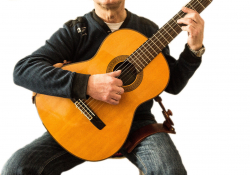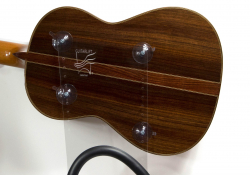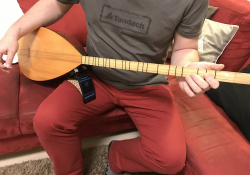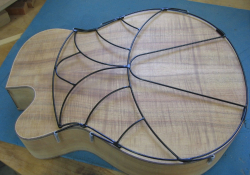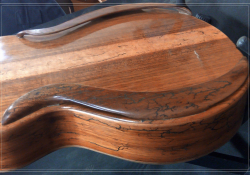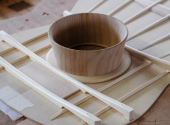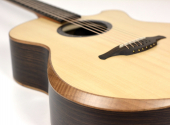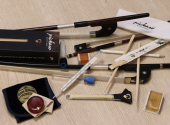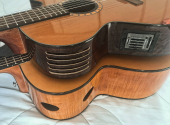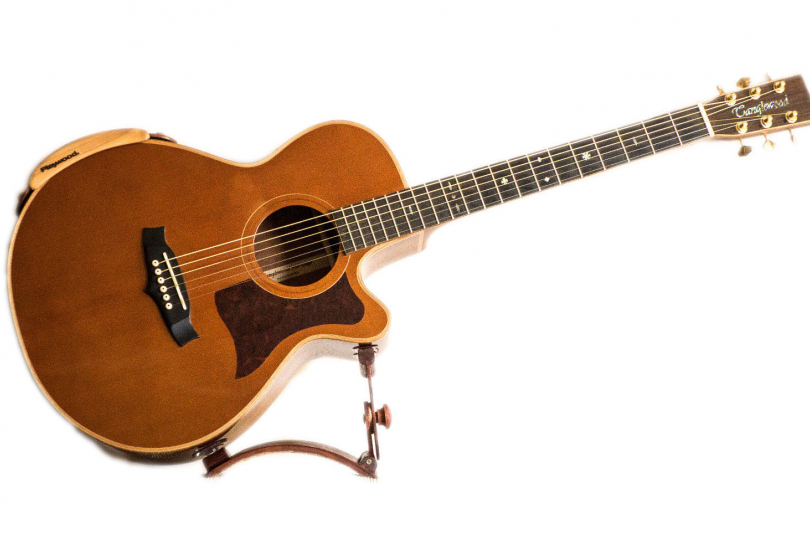
Laboratorium of Dr. Hyenik #8: Guitar Supports
The external armrests from the last episode of Laboratorium served as a segue to other "crutches and artificial substitutes" improving certain guitar imperfections perceived by some players. Conservative purists will probably disagree with such prosthetic desecration, but the invisible hand of the market has cracked it meanwhile.
Again, paradoxically, the torchbearers for advance are classical guitarists. For the sake of proper guitar positioning, many of them have taken to using various support devices to fix their instrument in a position otherwise challenging to carry out. These supports, usually accompanied by the magical incantation of ergonomics, have become really widespread – just try searching the keyword “guitar support”. So when you see a classical guitarist carrying the obligatory footstool and having both an armrest and guitar support installed, it certainly doesn't look conservative anymore. They are usually attached with suction cups (without any intervention), and you can see many different kinds in the following comprehensive video review.
But let’s not restrict ourselves to the classical guitars, as some ethnic instruments, for example, are unfortunately the very epitome of lack of ergonomy, so I'm happy to use guitar support on a bouzouki or saz so that I can play it comfortably even when seated.
Those who don't like tech structures with many adjustable joints can look for a specially shaped non-slip Dynarette "support cushion". For example, Russian virtuoso Alexander Misko, (already mentioned in our previous episodes) uses, among many other gadgets, the DIY cushion – so as to rotate his guitar a little to a position more suitable for his dazzling array of unconventional techniques, as can be clearly seen in his cover of the cult Pulp Fiction underworld stories.
A transition between the two worlds can be the monstrous Guitarlift, which on the one hand provides the aforementioned necessary position and on the other hand, thanks to its attachment to the back of the guitar, separates the player's body from the resonating back. This is the essence of another obscure gadget, which I’ve heard of in an interview with Vlasta Redl who was enthusiastic about the gadget of the famous mandolinist Radim Zenkl. The wire construction of the Tone-gard separates the back of the mandolin from the player's body, so that it does not muffle the sound and one mandolin sounds like two at a concert! (© Vlasta Redl). The Tone-gard is thus found mainly in mandolinists, who do not have to use the rather uncomfortable old-school hold on a taut strap, just to avoid muffling their back and get more tone.
Tone-gard is of course also available in a guitar version. I checked my playing position, but I didn't find that I muffled the back significantly, so I made my own variation of the Tone-guard for mandolin and bouzouki only. When designing new instruments, I considered how to incorporate this gadget more elegantly and conveniently into the body (those wires do push a bit, after all), and, in the meantime, an integrated solution has been produced by ReBell guitars. For smaller guitar bodies this can be an interesting advantage, of course without the ability to react to the age-changing shape of the guitarist's belly (unfortunately usually getting bigger :). Czechs are simply a nation of tinkerers and inventors. Next time, I'll present my extensive analytical research and testing of the mysterious keyword "tornavoz" to you.
If you have found an error or typo in the article, please let us know by e-mail info@insounder.org.

